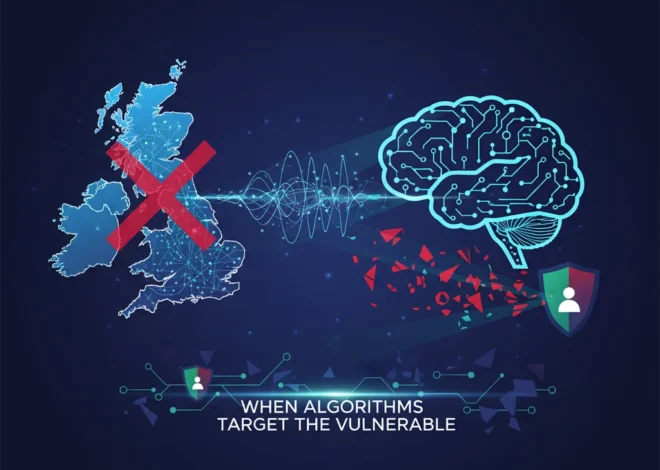
The AI Glitch That Saw a Gun: Why a Teen’s Doritos Snack Is a Wake-Up Call for All of Tech
Imagine this: you’re 16 years old, walking home from football practice, enjoying a bag of Doritos. It’s a mundane, everyday moment. Suddenly, you’re surrounded by armed police, ordered to the ground, and placed in handcuffs. Your crime? The snack in your hand. This isn’t a scene from a dystopian movie; it was the frightening reality for Taki Allen, a teenager in the US whose bag of chips was mistaken for a handgun by an AI-powered surveillance system.
This single, terrifying incident is more than just a bizarre headline. It’s a stark, real-world manifestation of the gap between the promise of artificial intelligence and its often-flawed execution. For developers, entrepreneurs, and leaders in the tech industry, Taki Allen’s story is not a distant anomaly—it’s a critical case study and a loud wake-up call. It forces us to confront uncomfortable questions about the software we build, the automation we champion, and the immense responsibility that comes with deploying AI in high-stakes environments.
In this deep dive, we’ll go beyond the headlines to dissect the technology behind this failure, explore the human cost of algorithmic errors, and outline the crucial lessons the entire tech ecosystem—from startups to established giants—must learn before the next “Doritos incident” has even more tragic consequences.
The Anatomy of an Algorithmic Mistake: How AI Sees a Snack as a Threat
To understand how a bag of chips becomes a gun in the “eyes” of an algorithm, we need to peek under the hood of computer vision, a field of artificial intelligence that trains computers to interpret and understand the visual world. Modern security systems often use a type of machine learning model called an object detection algorithm. In theory, its job is simple: scan video feeds and identify specific objects—like firearms.
The process, however, is fraught with complexity. These models are not “thinking” in a human sense. They are pattern-matching engines, trained on vast datasets containing millions of images. An AI learns what a “gun” looks like by analyzing countless labeled pictures of guns from various angles, in different lighting conditions. Its entire understanding is built from this data.
So, where did it go wrong? Several factors likely contributed:
- Shape and Reflection: The crinkled, irregular shape of a chip bag, combined with the metallic sheen of the foil packaging under certain lighting, could create a silhouette or glint that shares statistical features with the metallic handguns in its training data.
- Low-Resolution Imagery: Surveillance cameras often produce grainy or low-resolution footage, especially from a distance. The algorithm has to make a judgment call based on a handful of blurry pixels, increasing the chance of a misclassification—what’s known in the field as a “false positive.”
- Training Data Bias: The core of the problem often lies in the data used to train the AI. If the model was trained primarily on clear, high-contrast images of guns but has limited exposure to “negative” examples of similarly shiny, hand-held objects, it can become overly sensitive. It hasn’t been sufficiently taught what is not a gun. According to researchers at MIT, even subtle changes to an image can drastically fool a sophisticated AI model, highlighting their inherent brittleness.
–
–
The AI didn’t “see” a gun. It saw a collection of pixels whose statistical properties, when processed through its complex neural network, produced a high-probability match for the “gun” category it was trained to recognize. It’s a decision based on math, not context or common sense.
The Chip War Just Shifted Gears: Why Your Next Car is on the Geopolitical Frontline
The Human Cost of “Move Fast and Break Things”
For the developer who wrote the code or the company that sold the software, a false positive might be a statistical metric on a performance dashboard—a data point to be optimized in the next sprint. For Taki Allen, it was a traumatic, life-altering event. This is the dangerous disconnect when Silicon Valley’s growth-at-all-costs mindset collides with the complexities of human society.
This is far from an isolated incident. The most well-documented failures of AI in law enforcement come from facial recognition technology. In a landmark case, Robert Williams, a Black man from Detroit, was wrongfully arrested and detained for 30 hours because a facial recognition system incorrectly matched his driver’s license photo to a grainy image of a shoplifting suspect. The ACLU, which represented him, noted that the computer’s error was simply accepted by officers, leading to a “terrifying and humiliating experience” for Mr. Williams and his family (source). These cases reveal a disturbing pattern: an over-reliance on automated systems without sufficient human oversight or skepticism.
When the “product” is public safety and the “user” is a citizen, the stakes are infinitely higher than a buggy app update. The consequences of algorithmic errors aren’t just reputational damage or a dip in quarterly revenue; they are wrongful arrests, eroded public trust, and potentially fatal encounters.
The Double-Edged Sword: AI’s Growing Role in Law Enforcement
Despite these high-profile failures, the adoption of AI in law enforcement is accelerating. It’s often sold as a force multiplier—a way for understaffed departments to monitor more areas, analyze evidence faster, and predict crime before it happens. These systems are typically deployed as cloud-based SaaS (Software as a Service) solutions, making sophisticated technology accessible to police departments of all sizes.
The appeal is undeniable, but it’s crucial to weigh the promised benefits against the demonstrated risks. Below is a comparison of the arguments for and against the use of AI in this context.
| Promised Benefits of AI in Law Enforcement | Documented Risks and Real-World Failures |
|---|---|
| Enhanced Situational Awareness: AI can monitor thousands of camera feeds simultaneously, flagging potential threats for human review. | High False Positive Rates: As seen with Taki Allen, systems can generate numerous false alarms, wasting resources and endangering civilians. |
| Objective Data Analysis: Proponents argue AI can remove human bias from initial assessments by focusing purely on data. | Algorithmic Bias: AI models trained on historical data can inherit and amplify existing societal biases, disproportionately targeting minority communities. |
| Increased Efficiency: Automation can speed up tasks like searching for suspects in vast amounts of footage or analyzing forensic data. | Lack of Transparency: Many AI systems are “black boxes.” It’s often impossible to know exactly why a model made a specific decision, hindering accountability. |
| Predictive Policing: Some tools claim to predict where crimes are likely to occur, allowing for proactive resource deployment. | Erosion of Trust and Civil Liberties: Pervasive surveillance and wrongful stops based on flawed tech can damage the relationship between police and the communities they serve. |
A report from the Center for Strategic and International Studies (CSIS) highlights that while these technologies offer potential, they also pose “significant risks to civil rights and civil liberties” if not implemented with robust oversight and safeguards (source). The challenge isn’t just about better tech; it’s about better policy and governance around that tech.
The Line in the Sand: Why OpenAI's Stance on MLK Deepfakes is a Watershed Moment for AI
A Call to Action: Four Critical Lessons for the Tech Industry
The Taki Allen incident should be required reading in every computer science program and every startup boardroom. It’s a powerful lesson in the ethics of technology and a guide for what we must do better. Here are four actionable takeaways for anyone involved in building and deploying AI systems.
1. The Primacy of Data Quality and Diversity
The old adage “garbage in, garbage out” has never been more relevant. The performance of any machine learning model is fundamentally limited by the quality of its training data. We must move beyond simply scraping the web for images and invest in creating curated, diverse, and representative datasets. This includes vast numbers of “negative” examples—images of everyday objects that could be confused with threats—to teach the model nuance and context. This is the unglamorous, painstaking work that truly defines a robust AI.
2. Context is King: Beyond Simple Object Detection
Identifying an object is only one piece of the puzzle. True intelligence requires understanding context. A person holding a dark, rectangular object on a school bus at 3 PM is vastly different from a person holding the same object outside a bank at 3 AM. Future software must incorporate more contextual data points—time of day, location, surrounding activities—to reduce false positives. The goal of innovation shouldn’t just be accuracy in a vacuum, but reliability in the real world.
3. Design for Failure: The Human-in-the-Loop Imperative
No AI system will ever be perfect. Therefore, we must design our systems with the assumption that they will fail. In a high-stakes application like weapons detection, an AI alert should never be a direct trigger for an armed response. It should be an input for a human operator. The system’s interface should be designed to communicate uncertainty, showing the confidence score of its prediction and highlighting the features that led to its conclusion. This “human-in-the-loop” model preserves the efficiency of automation while retaining the critical judgment of a trained professional.
Is the AI Boom a High-Tech Cargo Cult?
4. Embrace Radical Transparency and Accountability
Who is responsible when an AI makes a mistake? The SaaS provider? The agency that bought it? The officer who acted on the alert? The industry has been murky on this, but that has to change. Companies building these tools must be transparent about their models’ error rates, biases, and limitations. This touches on a core principle of cybersecurity: you cannot secure what you do not understand. We need industry standards for auditing and independent testing to ensure that claims made in a sales pitch hold up under real-world scrutiny.
Conclusion: From Cautionary Tale to Catalyst for Change
Taki Allen was lucky. His terrifying encounter with a flawed algorithm ended in release and an apology. But we cannot rely on luck. His story is a powerful warning, a flashing red light on the dashboard of technological progress. It shows us the profound chasm between what a line of code does and how it impacts a human life.
For the tech industry, this is a moment of reckoning. The pursuit of powerful artificial intelligence must be tempered with a deeper commitment to wisdom, ethics, and humility. The tools we are building have the power to shape society in profound ways. Let’s ensure that we are not just coding for accuracy, but for justice; not just optimizing for efficiency, but for humanity. The next teenager walking home from practice deserves nothing less.


